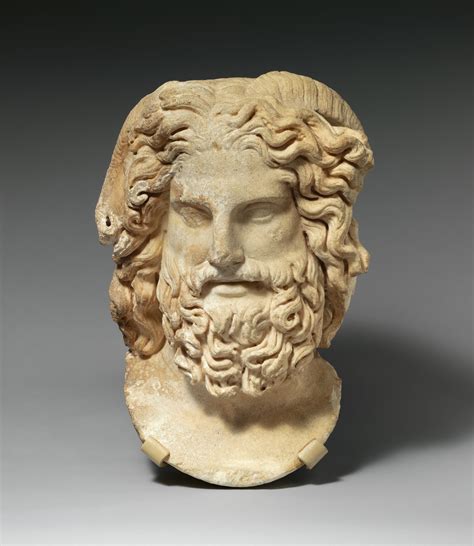hermes head | hermes propylaeus bust hermes head Hermes is an Olympian deity in ancient Greek religion and mythology considered the herald of the gods. He is also widely considered the protector of human heralds, travelers, thieves, merchants, and orators. He is able to move quickly and freely between the worlds of the mortal and the divine aided by his . See more Level 60 set depends on when you did the job quest. If you haven’t yet, the dyeable set will be one of the quest rewards. If you did it before that got changed (in 5.3 I believe) and got the Antiquated set, bring it to the Idyllshire NPC labeled Gear Improvement, it’ll cost some poetics.
0 · statue of hermes greek god
1 · molly hagan herman's head
2 · marble head of zeus ammon
3 · hermes propylaeus bust
4 · hermes propylaeus
5 · hermes head statue
6 · greek herm head
7 · greek god hermes bust
Please click on and read the above clicky box if you're leveling 01 to 79. Eager to extract ore in Endwalker? Go to Miner Leveling 80 to 90! Mining Leveling Guide - Navigation: Miner Level: Level 0-50 | 50-60 | 60-70 | 70-80 | 80-90. In this tier (1-50): MIN 0-15 | .
Hermes is an Olympian deity in ancient Greek religion and mythology considered the herald of the gods. He is also widely considered the protector of human heralds, travelers, thieves, merchants, and orators. He is able to move quickly and freely between the worlds of the mortal and the divine aided by his . See more

burberry neues logo
The earliest form of the name Hermes is the Mycenaean Greek *hermāhās, written 𐀁𐀔𐁀 e-ma-a2 (e-ma-ha) in the Linear B syllabic script. Most . See moreHermes began as a god with strong chthonic, or underworld, associations. He was a psychopomp, leader of souls along the road between . See moreAtlantiadesHermes was also called Atlantiades (Greek: Ατλαντιάδης), because his mother, Maia was the daughter of Atlas.ArgeïphontesHermes's epithet Argeïphontes (Ancient Greek See more

statue of hermes greek god
For Carl Jung, Hermes's role as messenger between realms and as guide to the underworld made him the god of the unconscious, . See moreThe image of Hermes evolved and varied along with Greek art and culture. In Archaic Greece he was usually depicted as a mature man, bearded, and dressed as a traveler, herald, or shepherd. This image remained common on the Hermai, which served as . See more
In the Mycenaean periodThe earliest written record of Hermes comes from Linear B inscriptions from Pylos, Thebes, and Knossos dating to the Bronze Age See moreEarly Greek sourcesHomer and HesiodHomer and Hesiod portrayed Hermes as the author of skilled . See moreThe postal stamps of the "large Hermes head" type are issued in application of the law of 1853 on the stamping of the mail by the sender and by this of May 24, 1860 on the postal rates. A decree, dated on the following June 10, announced the choice of Hermes, messenger of the Gods in the Greek mythology as the effigy of the stamps. The stamps depict a profile of the Greek messenger godHermes (/ ˈ h ɜːr m iː z /; Greek: Ἑρμῆς) is an Olympian deity in ancient Greek religion and mythology considered the herald of the gods. He is also widely considered the protector of human heralds, travelers, thieves, [2] merchants, and orators.
molly hagan herman's head
marble head of zeus ammon
The Greek god Hermes, messenger of the Gods in the Greek mythology, is the representation chosen, in 1860, by the Kingdom of Greece to illustrate its first postal stamps. The first type, the "large Hermes head", was issued in October 1861, and stayed in circulation up to 1886, it was then replaced by the second type, the "small Hermes head".

A mere 1.3 meters (4.3 feet) under the pavement in Athens' busy Aiolos Street pedestrian area, workers found a sculpture, a Hermes head, while working on a sewer.
Hermes was the ancient Greek god of herds and flocks, travellers and hospitality, roads and trade, thievery and cunning, heralds and diplomacy, language and writing, athletic contests and gymnasiums. He was also the herald Zeus, king of the gods.
Join Allan Smith for an in-depth exploration of Greek Large Hermes Head stamps. He systematically examines each printing and denomination, offering insights into identifying forgeries. By .This colossal male head belonged originally to a standing cult statue of the god Hermes-Toth. In Hellenistic Egypt, the Greeks recognized the congruence of their god Hermes with Thoth, god of magic and writing, and subsequently the two gods were worshipped as one.A herma (Ancient Greek: ἑρμῆς, plural ἑρμαῖ hermai), [1] commonly herm in English, is a sculpture with a head and perhaps a torso above a plain, usually squared lower section, on which male genitals may also be carved at the appropriate height. His head of Hermes Propylaeus, which once stood at the entrance of the Acropolis of Athens, inspired an array of later copies, including works housed at the Getty Center, the State Hermitage.
Herms — pillars topped with the god’s head and equipped with genitalia — were often placed to protect crossroads and gates. In Roman times, they decorated villa gardens and gymnasia. There are different explanations for the archaizing features prevalent on Greek and Roman herm heads.Join Allan Smith for an exhaustive exploration of Greek Small Hermes Head stamps. This presentation offers a meticulous breakdown of the various printings, i.
Hermes (/ ˈ h ɜːr m iː z /; Greek: Ἑρμῆς) is an Olympian deity in ancient Greek religion and mythology considered the herald of the gods. He is also widely considered the protector of human heralds, travelers, thieves, [2] merchants, and orators.The Greek god Hermes, messenger of the Gods in the Greek mythology, is the representation chosen, in 1860, by the Kingdom of Greece to illustrate its first postal stamps. The first type, the "large Hermes head", was issued in October 1861, and stayed in circulation up to 1886, it was then replaced by the second type, the "small Hermes head".
A mere 1.3 meters (4.3 feet) under the pavement in Athens' busy Aiolos Street pedestrian area, workers found a sculpture, a Hermes head, while working on a sewer.Hermes was the ancient Greek god of herds and flocks, travellers and hospitality, roads and trade, thievery and cunning, heralds and diplomacy, language and writing, athletic contests and gymnasiums. He was also the herald Zeus, king of the gods.Join Allan Smith for an in-depth exploration of Greek Large Hermes Head stamps. He systematically examines each printing and denomination, offering insights into identifying forgeries. By .
This colossal male head belonged originally to a standing cult statue of the god Hermes-Toth. In Hellenistic Egypt, the Greeks recognized the congruence of their god Hermes with Thoth, god of magic and writing, and subsequently the two gods were worshipped as one.
hermes propylaeus bust
A herma (Ancient Greek: ἑρμῆς, plural ἑρμαῖ hermai), [1] commonly herm in English, is a sculpture with a head and perhaps a torso above a plain, usually squared lower section, on which male genitals may also be carved at the appropriate height. His head of Hermes Propylaeus, which once stood at the entrance of the Acropolis of Athens, inspired an array of later copies, including works housed at the Getty Center, the State Hermitage.Herms — pillars topped with the god’s head and equipped with genitalia — were often placed to protect crossroads and gates. In Roman times, they decorated villa gardens and gymnasia. There are different explanations for the archaizing features prevalent on Greek and Roman herm heads.
hermes propylaeus
Oasis Striking Dummy (lvl 50) Riviera Striking Dummy (lvl 50) Faust Striking Dummy (lvl 60) Old World Striking Dummy (lvl 60) Gyr Abanian Striking Dummy (lvl 70) Crystarium Striking Dummy (lvl 80) Thavnairian Striking Dummy (lvl .
hermes head|hermes propylaeus bust


























